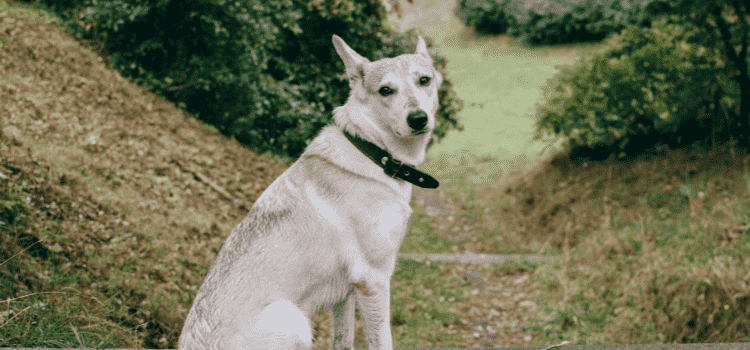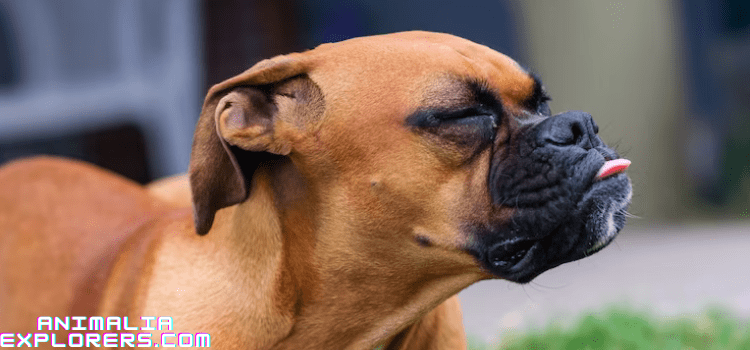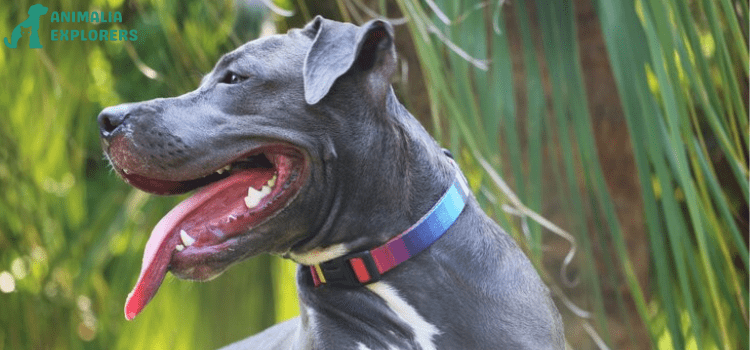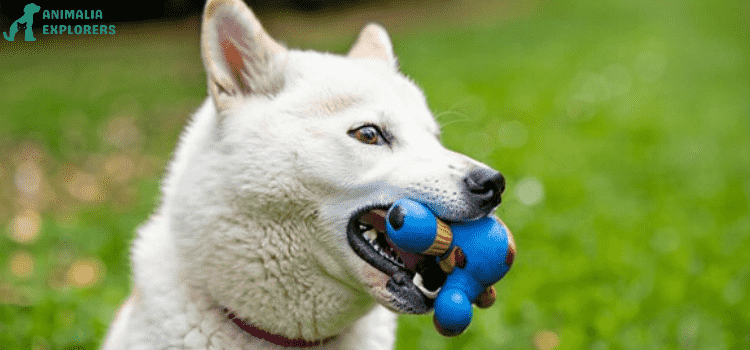Exploring the Do’s and Don’ts of Drying Dog Collars

Do’s and Don’ts of Drying Dog Collars
Do you ever struggle with drying your furry friend’s collars after a day of adventures? We’ve all been there – the wet, soggy collar that takes forever to dry. But fear not! In today’s blog post, we’re diving into the do’s and don’ts of drying dog collars. From simple hacks to avoid musty smells to innovative techniques for speedy drying, we’ve got you covered. Say goodbye to damp collars and hello to fresh-smelling pups – let’s explore the world of collar-drying together!
Introduction to Drying Dog Collars
Dog collars are important accessories for our furry friends as they serve multiple purposes such as identification, leashing, and training. However, with daily use and exposure to various elements like dirt, water, and even dog saliva, collars can get dirty and wet. This is where the process of drying dog collars comes in.
Drying dog collars is a crucial step in maintaining their quality and ensuring the comfort of your pet. Wet collars can become breeding grounds for bacteria and mold which can cause skin irritations or infections for your dog. Therefore, it is essential to know the dos and don’ts of drying dog collars to ensure that they are clean and safe for your furry friend.
The following section will guide you through the basics of drying dog collars – from understanding the types of materials used in making them to discussing different drying methods.
Understanding the Different Types of Dog Collars
When it comes to choosing the right collar for your furry friend, there are a variety of options available. Each type of collar is designed for a specific purpose and understanding their differences can help you decide which one is best for your dog. In this section, we will explore the different types of dog collars and their uses.
- Flat Collar: This is the most common type of dog collar and is often referred to as a buckle or snap collar. It is a simple design consisting of a strip of material with a buckle or snap closure that goes around your dog’s neck. Flat collars are typically made from nylon, leather, or fabric and come in various sizes and colors. They are suitable for everyday use and can be used to attach identification tags or walking leashes.
- Martingale Collar: Also known as a limited-slip collar, this type features two loops – one larger loop that goes around the neck and another smaller loop that tightens when pulled but does not choke your dog as traditional choke collars do. The martingale collar is perfect for dogs who tend to slip out of their flat collars or those with narrow heads such as Greyhounds.
- Head Collar/Halter: As the name suggests, this type of collar fits over your dog’s head and snout instead of going around the neck like other collars. It resembles a horse halter in appearance and works by giving you more control over your dog’s
Reasons for Drying Dog Collars
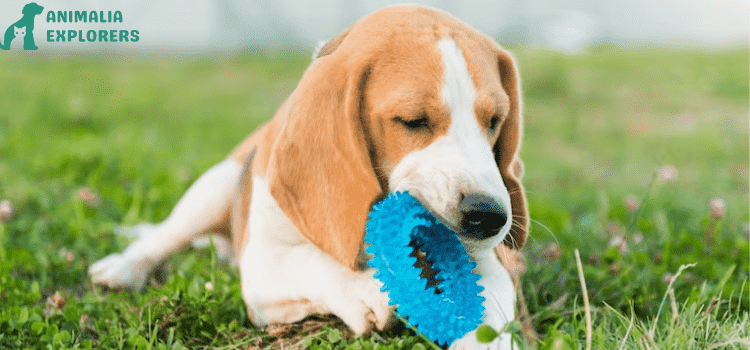
There are several reasons why it is important to properly dry your dog’s collars. Neglecting this step can lead to potential health and safety hazards for both you and your furry companion. In this section, we will delve deeper into the reasons behind drying dog collars and how you can ensure that they are completely dry before use.
- Prevent Bacteria and Mold Growth
One of the main reasons for drying dog collars is to prevent the growth of bacteria and mold. When wet, collars provide a warm and moist environment that is ideal for these microorganisms to thrive in. This can not only cause unpleasant odors but also pose a health risk to your dog if they come into contact with it.
To prevent this, always make sure to thoroughly dry any wet collars before putting them back on your pup. This includes not only the fabric part of the collar but also any metal hardware such as buckles or D-rings which can easily trap moisture.
- Avoid Skin Irritation
Dampness from an unwashed collar or improper drying techniques can also irritate your dog’s skin, leading to discomfort and potential skin infections. It is especially important for dogs with sensitive skin or allergies as their skin may react more severely to prolonged exposure to a damp collar.
Additionally, if your dog has been swimming or playing in the water, it is crucial to properly dry their collar afterward as chlorine or saltwater residue can also irritate their skin.
- Preserve Coll
The Do’s of Drying Dog Collars
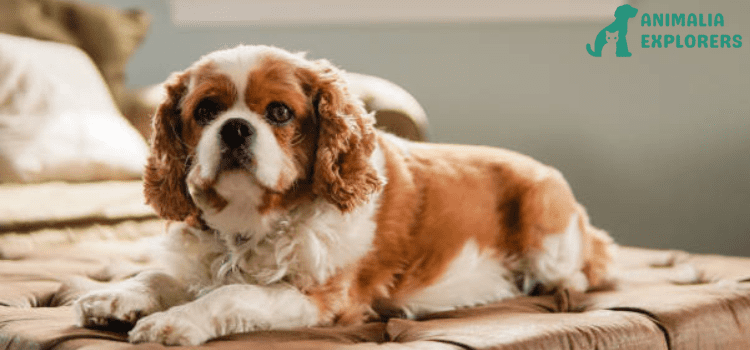
Drying your dog collar may seem like a simple task, but there are some important do’s to keep in mind to ensure it is done correctly. Properly drying your dog’s collar can not only extend its lifespan but also keep your furry friend comfortable and prevent any potential skin irritation or odor. In this section, we will explore the do’s of drying dog collars.
- Remove any excess water or dirt: Before starting the drying process, it is important to remove as much water and dirt from the collar as possible. Use a towel or cloth to gently pat dry the collar and remove any debris that may be stuck on it.
- Choose the right location: When drying your dog’s collar, choose a well-ventilated area with enough room for air circulation. Avoid placing it in direct sunlight or near a heat source as this can cause damage to the material.
- Hang dry if possible: Hanging the collar to dry is one of the best methods as it allows proper air circulation and prevents any creases or wrinkles from forming on the collar. You can use a hanger or clothesline to hang the collar.
- Use a fan: If hanging is not an option, you can use a fan to speed up the drying process. Place the fan at a safe distance away from the collar and allow it to blow air onto it until completely dry.
- Utilize absorbent materials: To absorb excess moisture from your dog’s collar, you can place it between two absorbent materials such as towels or paper towels. Press gently to soak up the moisture, and replace the towels if they become saturated.
- Use a low heat setting: If you need to use a dryer, make sure to use a low heat or delicate setting. High heat can cause damage to the material and shrink or warp the collar.
- Follow manufacturer’s instructions: Some dog collars may come with specific care instructions from the manufacturer. Make sure to follow these guidelines for best results and to avoid damaging the collar.
Checking the Material and Label Instructions

When it comes to drying your dog’s collars, there are a few important factors to consider. One of the most crucial steps in the process is checking the material and label instructions before beginning any type of drying method.
First and foremost, it is essential to identify what material the collar is made of. Dog collars come in various materials such as nylon, leather, cotton, and even metal. Each material has its specific care instructions when it comes to washing and drying.
For nylon collars, they are typically safe to be machine-washed on a gentle cycle. However, it is important to remove any attachments or charms before placing them in the washing machine. After washing, lay the collar flat on a towel or hang it up to air dry.
Leather collars require more delicate handling as water can damage their quality and cause them to crack or lose their shape. If your dog’s collar is made of leather, do not submerge it in water or put it in the washing machine. Instead, spot-clean any dirt or stains with a damp cloth and let it air dry completely.
Collars made from cotton can also be hand-washed with mild soap and warm water but should not be put in the dryer as this can cause shrinkage or damage to the fabric. Lay them flat on a towel or hang them up until they are fully dried.
Choosing the Right Heat Setting
Choosing the right heat setting is an important factor to consider when drying dog collars. Using high heat can cause damage to the material and affect the overall quality and durability of the collar. On the other hand, using low heat may not effectively dry the collar, leaving it damp and prone to mildew or odors.
When selecting a heat setting for drying dog collars, it is essential to first check the care instructions provided by the manufacturer. Some collars may be machine washable but not suitable for tumble drying, while others may require low or medium-heat settings.
If there are no specific instructions available, start with a low heat setting and gradually increase if necessary. It is always better to err on caution and use less heat than risking damage to your dog’s collar.
Another crucial factor to consider is the type of material used in making the collar. Synthetic materials such as nylon or polyester can withstand higher temperatures than natural materials like cotton or leather. If your dog’s collar has any delicate embellishments or decorations, avoid high heat settings as they may melt, warp, or discolor them.
In general, it is recommended to use a cool or low-heat cycle for drying collars made from natural materials. These materials are more sensitive to high temperatures and can shrink or become misshapen if exposed to excessive heat.
For synthetic materials, you can use medium-heat settings without worrying about damaging them. However, keep in mind that prolonged exposure to high temperatures can weaken the material over time, so it’s best to use low heat whenever possible.
Using a Dryer Sheet or Tennis Ball
To help speed up the drying process and prevent static cling, you can add a dryer sheet or a clean tennis ball into the dryer with the collars. The movement of the ball or sheet helps fluff and separate the collars, allowing them to dry more evenly and quickly.
Additionally, dryer sheets can also help eliminate any odors that may be present on the collars. However, be cautious when using scented dryer sheets as some dogs may be sensitive to strong fragrances.
Using a Hair Dryer or Air-Drying
If you are hesitant about using a machine dryer for your dog’s collar, you can also choose to air-dry them. Hang the collars in a well-ventilated area, away from direct sunlight or heat sources. It may take longer for them to dry completely, but this method is gentler on delicate materials and decorations.
Another alternative is to use a hairdryer on a low or cool setting to dry the collars. This method allows controlled and targeted drying without exposing the collars to excessive heat.
Securing the Buckles and Clips
Securing the buckles and clips of your dog collar properly is crucial for both the safety and comfort of your furry friend. Improperly secured buckles and clips can lead to discomfort, injuries, or even accidents for your dog. In this section, we will discuss some do’s and don’ts when it comes to securing the buckles and clips of your dog collar.
Do’s:
- Make sure the buckle is securely fastened: Before putting on the collar, check that the buckle is tightly secured. A loose buckle can easily come undone while your dog is moving around, leading to potential hazards.
- Position the buckle on top: The buckle should always be positioned on top of the collar rather than underneath it. This helps in preventing any pressure on your dog’s throat while walking or playing.
- Adjust according to size: Be mindful of adjusting the collar according to your dog’s neck size. If it is too loose, there is a high chance of slipping off or getting caught on something during playtime.
- Use a double D-ring design: Collars with a double D-ring design offer more security as they allow you to attach a leash or ID tag to both rings instead of just one. This ensures that even if one ring fails, there is still another attachment keeping the collar secure.
- Use locking clasps: Consider using collars with locking clasps rather than traditional buckles as they provide extra security against accidental release.
Don’ts:
- Over-tighten the collar: While it is important to ensure that the collar is snug and secure, over-tightening it can cause discomfort for your dog. As a general rule, you should be able to fit two fingers between the collar and your dog’s neck.
- Leave excess strap hanging: After securing the buckle, make sure to tuck in any excess strap to prevent it from getting caught on something or causing irritation to your dog’s skin.
- Attach a leash to a loose buckle: Never attach a leash directly to a loose buckle as this can easily come undone while walking or playing, putting your dog at risk of running away or getting injured.
- Use plastic clips: Avoid using collars with plastic clips as they are not very secure and can easily break or come undone.
- Use damaged buckles or clips: If you notice any damage or wear and tear on the buckles or clips of your dog’s collar, replace them immediately. Using damaged buckles and clips can compromise the safety of your dog.
Use a Protective Bag or Mesh Laundry Bag
When it comes to drying your dog’s collars, using a protective bag or mesh laundry bag can be a game changer. Not only does it protect the collars from potential damage, but it also helps them retain their shape and prevent tangling. Here are some do’s and don’ts to keep in mind when using a protective bag or mesh laundry bag for drying dog collars:
Do’s:
- Use a proper size bag: It is important to use the right size protective bag or mesh laundry bag that fits your dog’s collar comfortably. A too-small bag can cause the collar to twist and tangle, while a too-big one may not provide enough protection.
- Place multiple collars in one bag: If you have more than one collar to dry, consider placing them all in one protective bag or laundry mesh bag. This will not only save time but also reduce the risk of collars getting tangled with each other.
- Close the zipper or tie the drawstring: Make sure to securely close the zipper or tie the drawstring of the protective bag before placing it into the dryer. This will prevent any loose parts of the collar from getting caught and damaged during the drying process.
- Use low heat setting: When using a protective bag or mesh laundry bag for drying dog collars, always choose a low heat setting on your dryer. High heat can cause shrinkage and damage delicate materials like leather and fabric.
- Check for any damages: Before placing your dog’s collars in the protective bag, check for any damages like frayed edges or loose buckles. If you notice any damage, repair it before placing it in the dryer.
Don’ts
- Overload the bag: Avoid overstuffing the protective bag or laundry mesh bag with too many collars. This can lead to tangling and prevent them from drying properly.
- Use a plastic bag: Never use a plastic bag for drying dog collars as they can create static electricity and cause damage to the collars.
- Use high heat: As mentioned earlier, always use a low heat setting when drying dog collars in a protective bag or laundry mesh bag. High heat can cause shrinkage and damage delicate materials.
- Mix different types of materials: When drying multiple collars in one protective bag, make sure they are all made of similar materials. Otherwise, there is a risk of one collar damaging another due to friction during the drying process.
- Skip checking for damages: It is important to thoroughly check each collar for damages before placing them in the protective bag or laundry mesh bag. Skipping this step can result in further damage during the drying process.
Adding Dryer Balls or Towels for Fluffiness
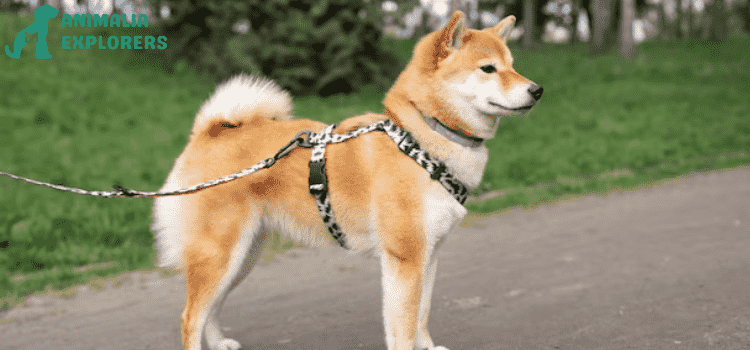
As pet owners, we all want our furry friends to be comfortable and cozy in their collars. That’s why it’s important to properly dry them after washing. One of the best ways to achieve a fluffy and soft dog collar is by adding dryer balls or towels during the drying process.
Dryer balls are small, ball-shaped objects made from materials such as wool, rubber, or plastic. They work by agitating the fabric in the dryer, separating it, and allowing more air to circulate it. This results in shorter drying times and fluffier fabrics.
Similarly, using towels during the drying process can also help make your dog’s collar softer and fluffier. The towels absorb moisture from the collar while also preventing any clumping or matting of fibers.
To use either dryer balls or towels when drying a dog collar, simply add them into the dryer with the collar before turning it on. It’s recommended to use at least three dryer balls or two large towels for maximum effectiveness.
When using this method, there are a few do’s and don’ts that should be kept in mind:
Do’s:
- Use high-quality dryer balls made from natural materials such as wool.
- Add a couple of drops of essential oils onto the dryer balls for a fresh scent.
- Toss in some clean tennis balls with your dog’s collar if you don’t have any dryer balls on hand.
- Use
The Don’ts of Drying
When it comes to drying your dog’s collar, there are a few things that you should never do. These “don’ts” can help prevent damage to the collar and ensure its longevity.
- Don’t use high heat: One of the biggest mistakes people make when drying their dog’s collars is using high heat. The high heat from a dryer or direct sunlight can cause the material of the collar to shrink or warp, making it uncomfortable for your dog and potentially damaging the hardware on the collar. Always opt for low-heat or air-drying methods instead.
- Don’t wring out wet collars: Like with clothing, wringing out a wet dog collar can cause damage to its structure. The twisting motion can weaken the stitching and fabric, leading to tears and fraying over time. Instead, gently squeeze excess water out of the collar before laying it flat to dry.
- Don’t use harsh chemicals: Avoid using harsh chemicals such as bleach or ammonia when washing your dog’s collars. These substances can be harmful to both your pet and the material of the collar itself, causing discoloration or weakening of the fabric.
- Don’t hang dry heavy collars: If your dog’s collar is made from a heavier material like leather or metal chains, avoid hanging it up to dry. The weight of these materials can stretch out the shape of the collar over time, causing discomfort for your dog and potentially damaging any attached tags or buckles.
- Don’t neglect the hardware: When drying your dog’s collar, pay attention to the hardware as well. If there are any metal buckles or clasps, make sure to dry them thoroughly to prevent rusting or corrosion.
By avoiding these common mistakes and following proper drying techniques, you can help keep your dog’s collars in great condition for years to come. Remember to always check the care instructions on the label of your dog’s collar for specific guidelines on how to wash and dry it.
How To Clean Different Types Of Dog Collars By Hand
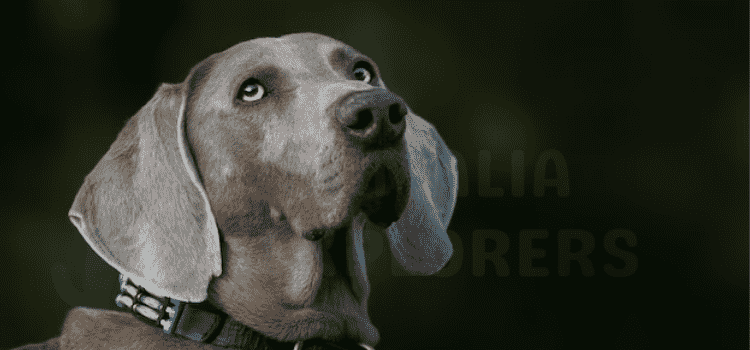
When it comes to cleaning your dog’s collar, it’s important to remember that different types of collars may require different methods and products. While some collars can be easily thrown into the washing machine, others may need to be cleaned by hand. In this section, we will discuss how to properly clean different types of dog collars by hand.
Fabric Collars
Fabric collars are typically made with materials such as nylon, cotton, or polyester and can accumulate dirt and grime over time. To clean a fabric collar by hand, you will need a bowl or sink filled with warm water and mild detergent.
Firstly, remove any tags or attachments from the collar and soak it in soapy water for 10-15 minutes. Then use a soft-bristled brush or cloth to gently scrub the surface of the collar, paying extra attention to any areas with stubborn stains. Rinse thoroughly with clean water and allow it to air dry completely before putting it back on your dog.
Leather Collars:
Leather collars are not only stylish but also durable and long-lasting if taken care of properly. However, cleaning leather collars can be tricky as they should not be submerged in water or exposed to harsh chemicals.
To clean a leather collar by hand, start by wiping off any excess dirt or debris with a damp cloth. Then mix equal parts white vinegar and olive oil in a small bowl and dip a soft cloth into the mixture. Gently rub this onto the collar, focusing on any areas with stains or discoloration. Once done, wipe off any excess mixture and allow the collar to air dry.
Metal Collars
Metal collars, such as choke chains or prong collars, are commonly used for training purposes and can get dirty quickly. To clean a metal collar by hand, you will need a bowl filled with warm water and mild soap, as well as a small brush or cloth.
Start by removing any attachments from the collar and soaking it in the soapy water for 10-15 minutes. Then use the brush or cloth to scrub away any dirt or grime from the surface of the collar. Rinse thoroughly with clean water and dry with a towel before putting it back on your dog.
Plastic Collars
Plastic collars, often used for identification purposes, can also accumulate dirt and odors over time. To clean a plastic collar by hand, you will need a bowl filled with warm water and mild soap, as well as a soft-bristled brush or cloth.
Remove any tags or attachments from the collar and soak it in the soapy water for 10-15 minutes. Use the brush or cloth to gently scrub away any dirt or grime from the collar. Rinse thoroughly with clean water and allow it to air dry completely before putting it back on your dog.
It’s important to always read the manufacturer’s instructions for cleaning and caring for your dog’s collar, as some materials may require specific products or methods. Regularly cleaning your dog’s collar will not only keep it looking fresh but also help prevent bacteria and odors from building up.
NYLON
Nylon collars are durable and easy to clean, making them a popular choice for dog owners. To clean a nylon collar by hand, you will need a bowl or sink filled with warm water and mild soap.
Remove any tags or attachments from the collar and soak it in the soapy water for 10-15 minutes. Use a soft-bristled brush or cloth to gently scrub the surface of the collar, paying extra attention to any areas with stubborn stains. Rinse thoroughly with clean water and allow it to air dry completely before putting it back on your dog. You can also use a fabric stain remover for tougher stains on nylon collars.
Conclusion
Taking proper care of your dog’s collar is essential for their comfort and safety. By following these do’s and don’ts of drying dog collars, you can ensure that the collars remain in good condition and continue to serve their purpose effectively. Remember to always read the manufacturer’s instructions before using any cleaning or drying methods on your dog’s collar. With a little extra care, you can keep your furry friend looking stylish and feeling comfortable in their freshly dried collar.

